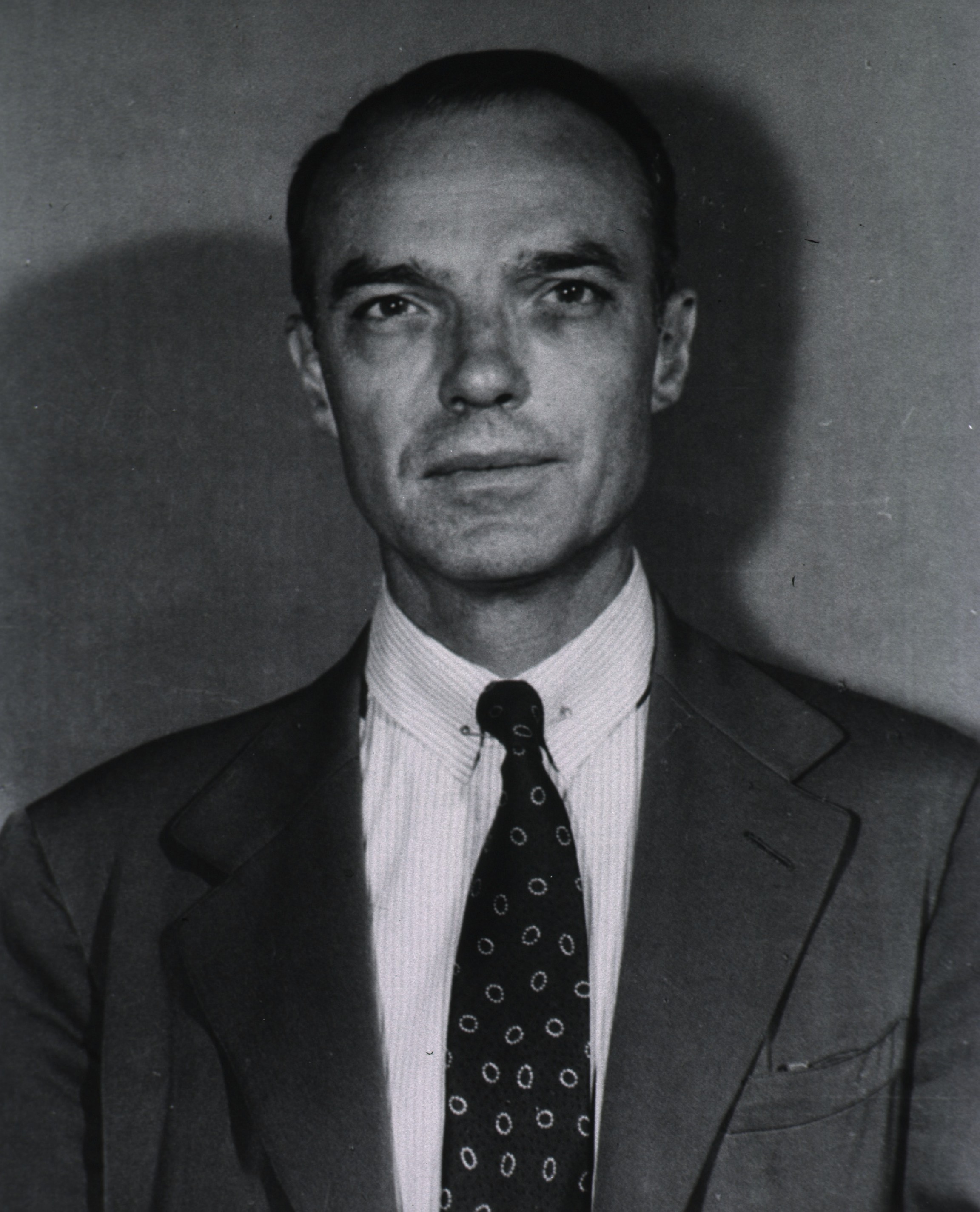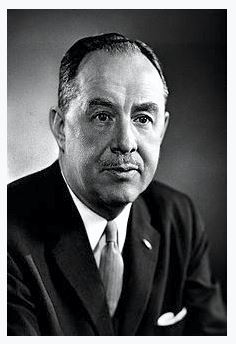- Our History
- The History of Neurology and Timeline
- Timeline
- George D. Gammon, Chair

FACULTY INTERVIEWS:
Dr. Larry Brown interviews Dr. Lucy Rourke: Dr. Lucy Rourke talks about her arrival to Penn and her training experiences. Click the link here to listen to the full video here: Lucy Rorke Interview full
Dr. Larry Kerson interviews Dr. John Bevilaqua: Check out John Bevilaqua talk about memorable moments in the department: Here is the full interview link: John Bevilaqua
George D. Gammon, Chair, 1942 — 1962
Dr. George D. Gammon was born on April 26, 1902, in Waxahachie, Texas. He graduated from the University of Texas in 1924 and earned his M.D from University of Pennsylvania in 1927. His neurology training by Dr. George W. Spiller and his faculty colleagues constituted a brief apprenticeship, in the days before formal residency training had been developed. He joined the Penn faculty in 1929 and was named Neurology Chairman in 1942.
Dr. Gammon’s notable research included the effects of Penicillin in neurosyphilis, brain action potentials, sensory stimulation and muscle disease. He was senior author or included in over 40 publications. The most notable were several papers that established penicillin as the treatment of choice for syphilis, e.g.:
Penicillin Therapy Alone in Neurosyphilis: An Analysis of Clinical Results, Gammon GD, Stokes JH, Steiger HP, Steele W, Beerman H, Ingraham NR, Gyorgy P, Rose E, Lentz JW, Ornsteen A, Scott D. Penicillin Therapy Alone in Neurosyphilis: Annals of Internal Medicine, Sept. 1946
During World War II, Dr. Gammon was a member of the US Army’s Neurotropic Virus Commission. Before World War II, soldiers died more often of disease than of battle injuries. The ratio of disease-to-battle casualties was approximately 5-to-1 in the Spanish-American War. In 1941, fearing another pandemic as it braced for a second world war, the US Army organized a commission to develop the first influenza vaccine. The commission was part of a broader network of federally orchestrated vaccine development programs. These programs enlisted top specialists from universities, hospitals, public health labs and private foundations to conduct epidemiological surveys and to prevent diseases of military importance. Research initiatives targeted influenza, bacterial meningitis, measles, mumps, neurotropic diseases, tropical diseases, and acute respiratory diseases.

Epidemiologist - guided discovery of
polio vaccine and first to isolate influenza
virus in the US.
Under the leadership of virologist Thomas Francis Jr., (see photo on right) who later conducted the clinical trial of the Salk polio vaccine, the commission gained FDA approval for an influenza vaccine in less than two years. It was the first licensed flu vaccine in the US. At that time, and until the development of the COVID vaccines, it took eight to fifteen years on average to develop a new vaccine.
Dr. Gammon left Philadelphia in 1962 to work in Veterans Administrations hospitals in Michigan and New Orleans. He died as the result of a hit-and-run motor vehicle accident in Philadelphia, May 10, 1974, at the age of 72.
Milestones under his leadership
A landmark interventional trial with Pencillin as the single therapy for neurosyphilis was conducted in the department as part of the Penicillin-Syphilis group, published in JAMA in 1946 (see above). Penicillin had been purified just six years earlier and in the early 1940s was established as the most effective treatment for early-stage disease. The study led by Drs. Stoke, Steiger and Gammon, showed an overall improvement of symptoms and CSF indices in 65% of symptomatic neurosyphilis cases.
References and Sources:
Collections | Archives Space Public Interface (cpparchives.org)
Abraham Ornsteen papers, MSS 373. Historical Medical Library of The College of Physicians of Philadelphia. http://localhost:8081/repositories/2/resources/1504 Accessed February 22, 2024.
Thomas Francis Jr. - Wikipedia
Major Discoveries and Events at Penn during this time
- 1942 - At the Commencement held on 18 June, the University awarded the School of Allied Medical Profession’s degree of Bachelor of Science in Occupational Therapy to Josephine Cohen, Marie Antoinette Robbins, and Thelma M. Thoms. They were the first women to earn the B.S. in O.T. degree at Penn.
- 1946 - A landmark interventional trial with Pencillin single therapy for neurosyphilis was conducted in the department as part of the Penicillin-Syphillis group, published in JAMA in 1946. Penicillin was purified a mere six years earlier and in the early 1940s was established as the most effective treatment for early-stage disease. The study lead by Dr. Stokes, Dr. Steiger and Dr. Gammon, showed an overall improvement of symptoms and CSF indices in 65% of symptomatic neurosyphilis cases.
- 1949-51 Martin Luther King, Jr. audited classes in philosophy at the Graduate School of Arts and Sciences.
Major Translational Research and Clinical Advances during this era
Dr. Gammon’s notable research included the effects of Penicillin in neurosyphilis, brain action potentials, sensory stimulation and muscle disease.
First Report on the efficacy of penicillin in Neurosyphilis 1946
First NIH Training Grant to support residency training - submitted by Dr. M. Shy 1961
People of this era
| Abraham M. Ornsteen-Professor of Clinical Neurology-Associate Professor of Neurology-*Emeritus Professor of Neurology-Associate Professor of Neurologic Clinic-Assistant professor of Neurology | Samuel B. Hadden-Associate Professor of Neurologic Clinic |
| Francis W. Sinkler-Associate Professor of Neurology-Associate Professor of Neurologic Clinic | Frederick H. Leavitt-Assistant Professor of Neurology-Associate Professor of Neurology-Associate Professor of Neurologic Clinic |
| Gabriel A. Schwartz-Assistant Professor of Neurology-Associate in Neurology-Associate Professor of Neurologic Clinic | Harvey Bartle Jr-Assistant Professor of Neurology-Associate in Neurology-Associate Professor of Neurologic Clinic |
| Frederick H. Ehmann-Instructor in Neurology-Associate-Associate Professor of Neurologic Clinic | James S. Dean-Associate in Neurology-Associate Professor of Neurologic Clinic |
| Charles Rupp-Associate in Neurology-Associate Professor of Neurologic Clinic | Melamed B. Bernard-Instructor in Neurology-Associate Professor of Neurologic Clinic-Associate in Neurology- |
| Matthew Molitch-Associate Professor of Neurologic Clinic | C. Nelson Davis-Instructor in Neurology-Associate Professor of Neurologic Clinic |
| Richard L. Masland-Associate Professor of Neurologic Clinic | Robert S. Wigton-Associate Professor of Neurologic Clinic |
| Joseph G. Chusid-Associate Professor of Neurologic Clinic | George Wilson-Associate Professor of Neurologic Clinic |
| Martin Netsky | Donald Scott Jr-Associate in Neurology |
| John Todd | Aaron W. Mallin-Instructor in Neurology- Assistant Instructor in Neurology-Associate |
| Dominic Rovito- Assistant Instructor in Neurology | Frederick H. Lewey-Associate Professor in Neuropathology |
| Harold Dillon-Assistant Instructor in Neurology | A. S. Tornay-Associate in Neurology |
| N. W. Winkelman Jr-Instructor in Neurology | Michael O. Grassi-Instructor in Neurology |
| William Wilson- Instructor in Neurology-Associate | Lawrence J. Barrows-Associate |
| Geraldine A. King-Assistant Instructor in Neurology-Associate | Melvin W. Thorner-Electroencephalography-Associate |
| James F. Toole-Associate | Donald S. Weeks-Electroencephalography |
| Lloyd G. Potter-Multiple Sclerosis Unit | Wilmer M. Anderson-Associate |
| John E. Bevilacqua-Associate | John A. Churchill-Assistant Instructor in Neurology |
| William B. Cadwalader-Emeritus Professor of Neurology | Philip Duffy -Assistant Instructor in Neurology |
| Mark A. Griffin, JR. -Assistant Instructor in Neurology | Margaret J. Dilworth-Research Fellow in Neurology |
| Robert W. Meyers-Assistant Instructor in Neurology |
